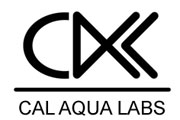How to convert the high-flow bubble rate to the normal-flow bubble rate?
Converting the high-flow bubble rate to the normal-flow bubble rate can be done by doing the following: 1) Measure the rate in normal-flow mode. (A bubbles per second) 2) At the same CO2 rate, measure the rate in high-flow mode: (B bubbles per second) 3) Divide A by B Example: 1) In the normal-flow mode, [...]

